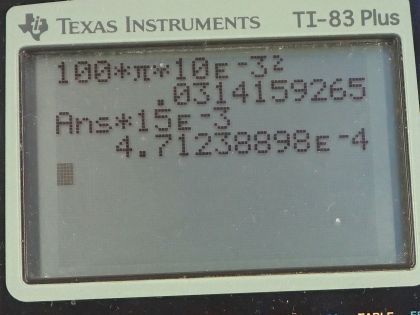Solution video
OpenStax College Physics, Chapter 12, Problem 32 (Problems & Exercises)

Calculator Screenshots
Comments
Hello,
In this solution, I notice that when I use the power equation given in the textbook () I get a slightly higher value for the power than the solution shows, however if I neglect the kinetic and potential energy terms I get the same answer as this solution. Should I ignore the kinetic and potential energy terms ( and ) in the power equation? Obviously the fluid has some velocity, but if the velocity does not change (or perhaps because the velocity given is an average value) should I just omit it from the equation?
Thanks!
Hi ts,
Thank you for this question. The kinetic energy and potential energy terms are relevant only if they are changing along the tube. The height of the two ends of the artery are presumed to be the same, and the speed of the blood is also assumed to be constant. The only thing changing along the length of the artery is the pressure, so only this term is non-zero in the expression you gave. Example 12.6 is similar to part (b) of this problem, and is good inspiration.
Also, notice that , showing your suggested expression is the same as the shown in the solution video.
All the best with your studies,
Shaun


